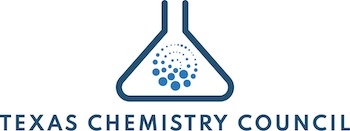Complete Story
05/15/2025
In Break for Chemical Makers, Trump Pauses Most China Tariffs
Chemical & Engineering News | Alexander Tullo | May 12, 2025
In Break for Chemical Makers, Trump Pauses Most China Tariffs
Chemical companies have gotten a reprieve—albeit a temporary one—from sky-high tariffs.
The US and China declared a 90-day truce in their trade war during a meeting between the countries in Geneva to negotiate a broader trade agreement.
Both countries walked back most of the tariffs they levied on each other in early April. This cycle of retaliation culminated in new US duties on goods from China of 145% and Chinese duties on US goods of 125%. Now the US duty on most goods from China will fall to 30%, and China will charge US exporters only 10%.
The high tariffs would have disrupted the US chemical industry—and still might if the two countries fail to reach a permanent deal. In DuPont’s first-quarter earnings announcement earlier this month when the triple-digit tariffs were still in effect, the company estimated a tariff-related impact to its earnings this year of $60 million. Eastman Chemical anticipated a $30 million impact on its second-quarter results.
Specialty chemical producers—which make low-volume, high-value functional ingredients for products like paints, adhesives, and plastics—have been mobilizing in response to the tariffs. Some such companies depend on China as one of the few sources, and sometimes the only source, for certain exotic raw materials.
Many companies bulked up inventories before the tariffs increased prices or looked for new suppliers to avoid the tariffs. According to a survey conducted by the Society of Chemical Manufacturers and Affiliates (SOCMA), a trade group, a third of the companies have increased inventories to between 1 and 3 months more than they normally carry. Some 70% of the companies SOCMA surveyed say they are reevaluating supplier relationships.
The tariffs also threatened Chinese buyers of US commodity chemicals, including low-cost petrochemicals and polymers like polyethylene. In a recent webinar on the tariff crisis hosted by Chemical Market Analytics by OPIS, Nick Vafiadis, vice president of plastics and polymers at the research firm, said China imported about 2.6 million metric tons of US polyethylene last year. Should the trade war continue, US producers will need to find new markets for that material, he said.
Steve Lewandowski, the research firm’s vice president of global olefins and derivatives, predicted during the webinar that the tariffs could also curtail US exports of ethane to China. It is cheaper to make the petrochemical building block ethylene from ethane, which is extracted from natural gas, than it is to make it from naphtha derived from petroleum. “It is really the lowest-cost feed that China has,” he said.
China imports about 4 million metric tons of ethane from the US annually. Because this ethane is so cheap, Chinese petrochemical producers can afford to import it at tariffs of up to 50%. But at the 125% tariff that the Chinese government temporarily enforced, “it just does not work,” Lewandowski said.

